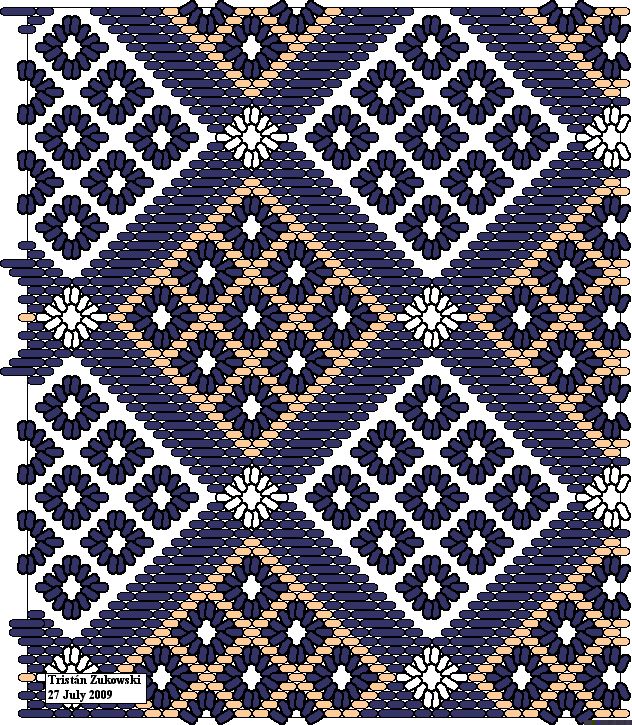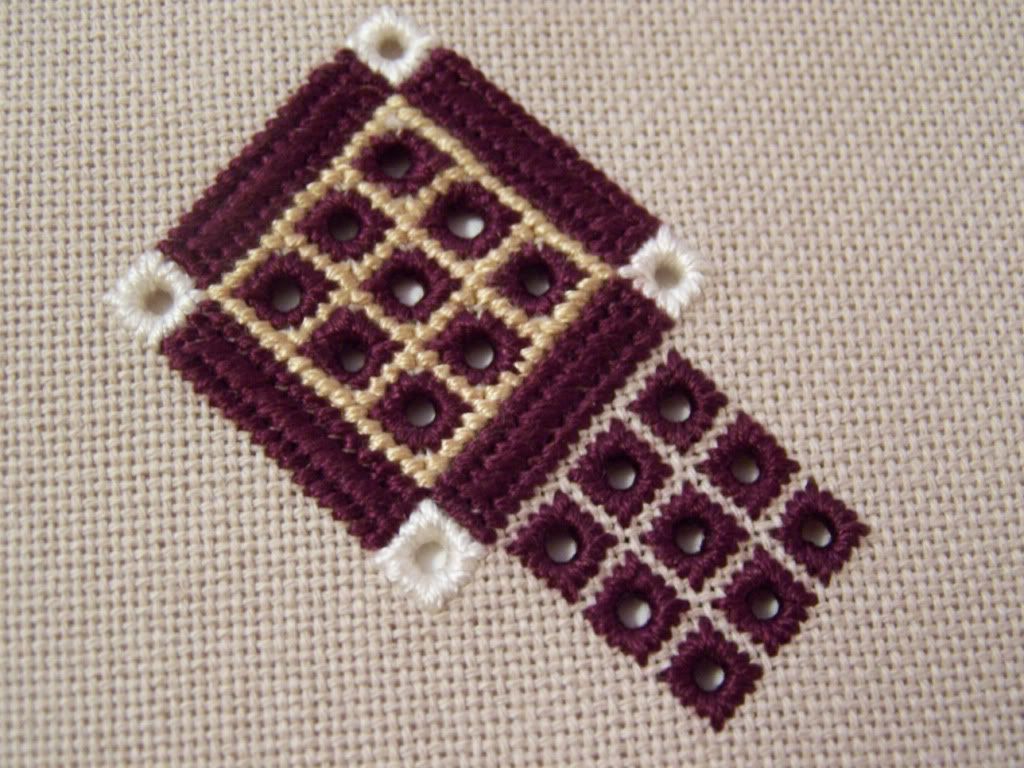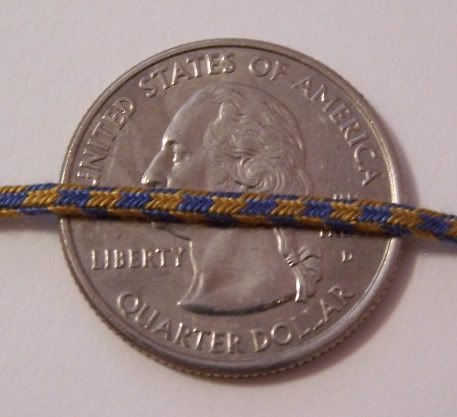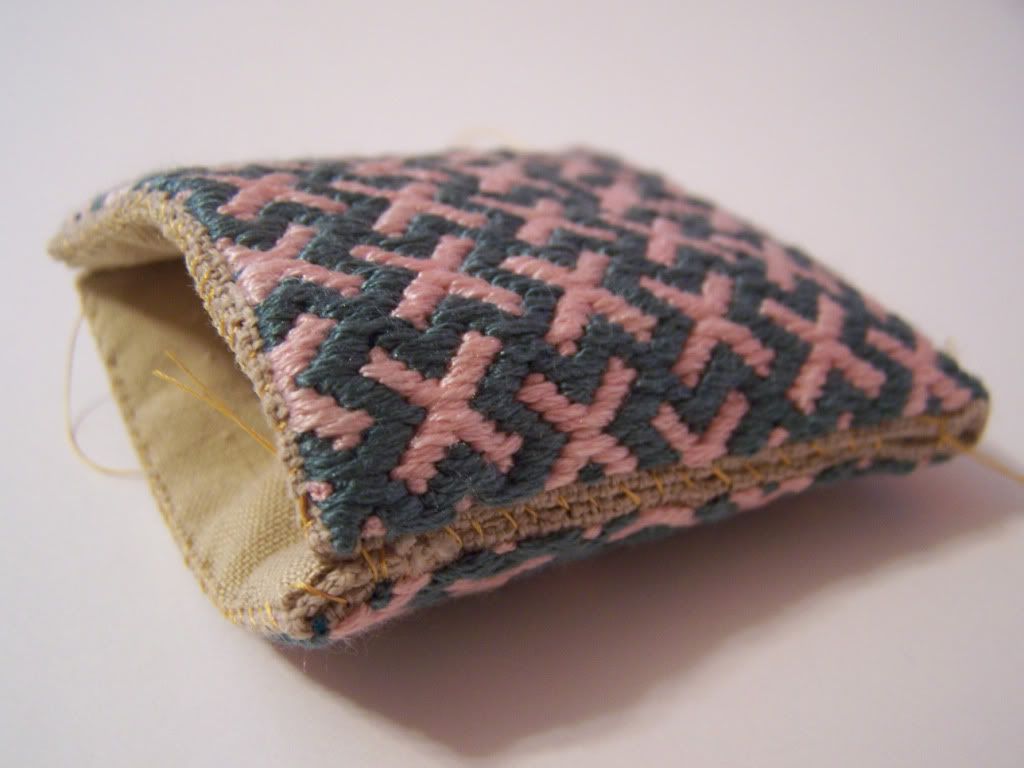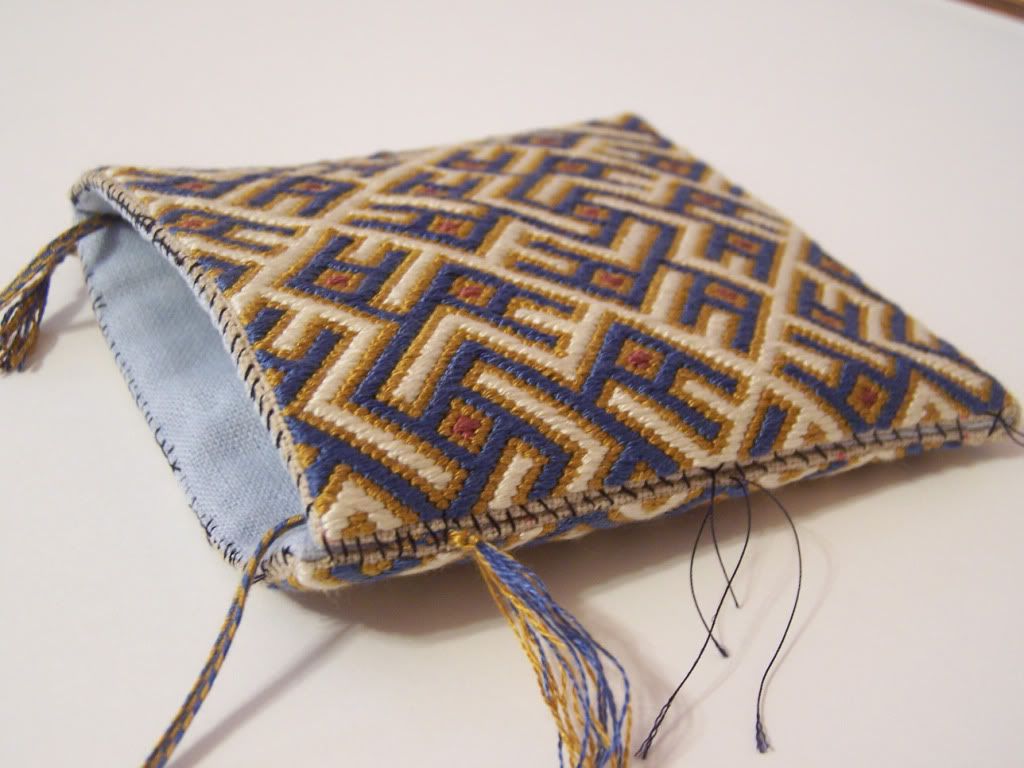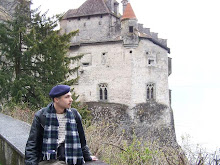As for the direction of the side-stitching: I don't know if anyone's researched this in depth or not. I've gotten into the habit of starting on the top corner, moving across the top edge, and down the side. This way, when I finish I can use the leftover 'warp' for a corner tassel. I can't tell you if this is an historically accurate way of doing it or not; I have neither seen nor done the research myself at this point. As always, comments and criticisms are always welcome :-)
The main problem I've found with the above method is due to the fact that it takes two people to work: one manipulating the loops, one stitching, and both trying to maintain a consistent tension. At the moment, I don't have anyone around to be that second person. So, I've been experimenting with a one-person method; replace the finger loop idea with a series of tablets, with only two threads per tablet, and alternating between Z and S orientation. Move the pack of tablets forward a half-turn for each pick.
With a bit of practice, and some luck, I managed to make it work!
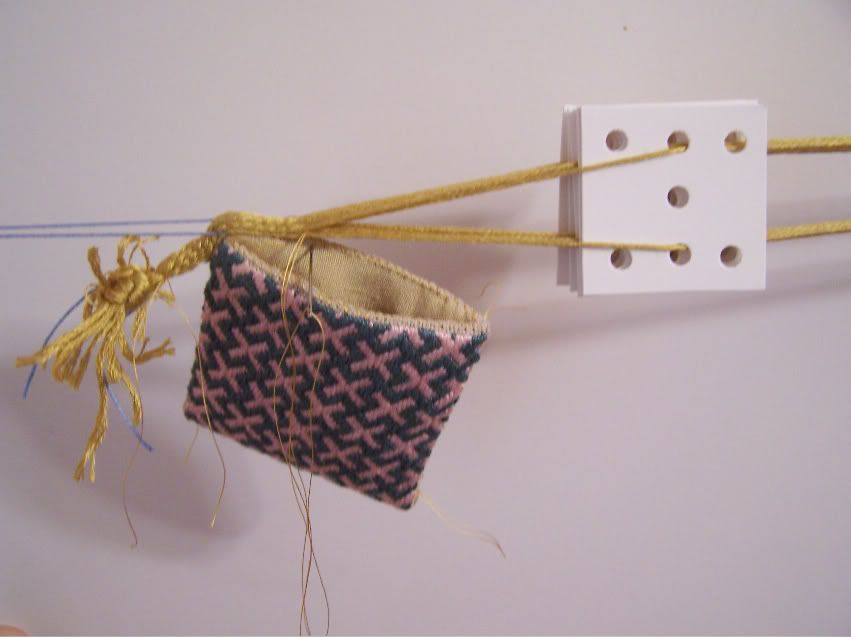

See that blue thread holding on to the purse on the left? When the time comes to turn the corner and work down the side, I'll put another loop through the fabric under the corner, and then attach that to the anchor at the left. This way, you're always working in a straight line, which is obviously what the threads want to do anyway. Obeying the laws of physics is key to not going insane during a project like this..
